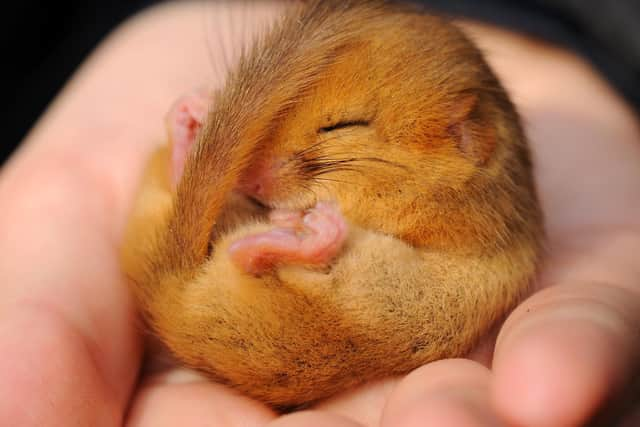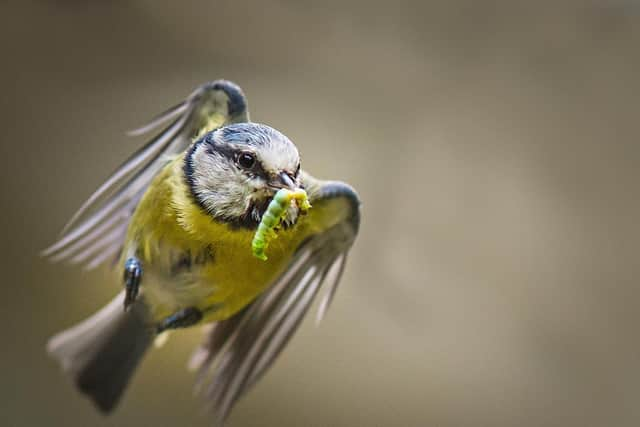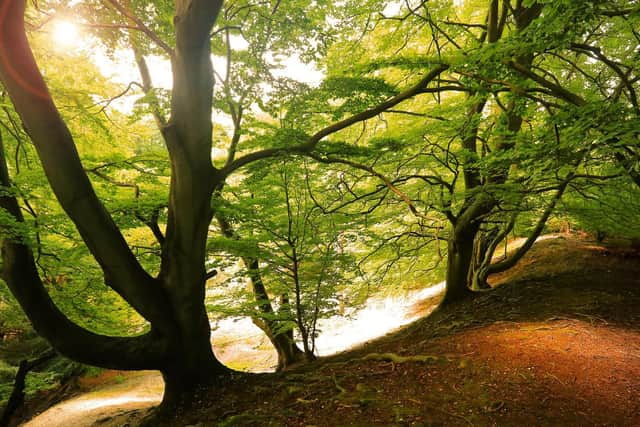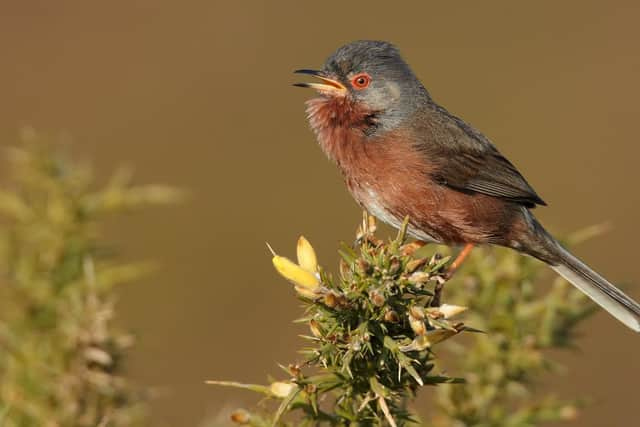Climate change is already threatening wildlife in Buckinghamshire, new report warns
and live on Freeview channel 276
Buckinghamshire' s wildlife is already being affected by climate change, and some native species may struggle to survive, a new report warns.
The report from the Berks, Bucks and Oxon Wildlife Trust (BBOWT) says mammals, birds, insects, trees and plants across the three counties are already being seriously impacted by our changing climate - but there are some winners too.
Advertisement
Hide AdAdvertisement
Hide AdNumbers of dormice recorded at nature reserves in all three counties have decreased since 2010 in a change linked to warmer winters, there is strong evidence that caterpillars are emerging at different times of year, impacting breeding birds, and hotter summers could see beech trees disappear from some parts of the local area.


BBOWT, which manages more than 80 nature reserves across the three counties, has highlighted some of these troubling cases in its latest 10-year action plan to mitigate the effects of climate change at the sites it manages.
It comes as the UK prepares to host the COP26 UN climate conference in Glasgow next month.
BBOWT’s head of ecology Debbie Lewis, who authored the report, said: “We all know that climate change is happening around the world and is likely to get worse in many places - but now we are starting to see it threatening plants and animals in our local area, which is deeply worrying.
Advertisement
Hide AdAdvertisement
Hide Ad"We are seeing compelling evidence that warmer winters are already disrupting animals’ phenology – the way their life cycles are linked to seasonal weather patterns.


“We can also predict that, if our climate continues to change in the ways that have been predicted, some of our much-loved native species will struggle to survive.
"BBOWT can’t stop climate change but, by building a picture of its effect on wildlife, we can work out which species and habitats might be most at risk and then take steps to protect them.”
BBOWT is in a particularly good position to look at the effects of climate change locally: since 2002 it has been carrying out a detailed monitoring program of species and habitats across its nature reserves.
Advertisement
Hide AdAdvertisement
Hide AdThis means it has already been able to record changes in species populations which may be linked to changing climate.


Dormice
BBOWT regularly counts the numbers of dormice at nest boxes at three nature reserves - Chinnor in Oxfordshire, Bowdown Woods in Berkshire and Little Linford Wood in Milton Keynes.
The report shows how the average dormouse count at each site steadily decreased from 2010 to 2018.
This ties in with national surveying which estimates that the species' range in the UK has shrunk by around half in the last 100 years.


Advertisement
Hide AdAdvertisement
Hide AdAlthough it is not possible to say exactly why populations are decreasing, hibernating animals such as dormice often use weather cues to trigger emergence from hibernation, and it is thought that, because of increasingly warm winters, dormice are waking up sooner than normal when there is not enough food around for them to eat.
Beech trees
Beech woodland is common across southern England and Wales, particularly in the Chilterns and the Cotswolds.
However, these trees are particularly sensitive to drought, and are likely to be especially vulnerable to the changes in rainfall and temperature that are projected for the south-east of England in the coming years.
The report cites Natural England's Climate Change Adaptation Manual which warns that, on some less suitable soils on southern-facing slopes, beech is likely to decline or disappear entirely.
Birds and caterpillars
Advertisement
Hide AdAdvertisement
Hide AdMany birds, including blue tits, great tits and pied flycatchers, feed their chicks largely or entirely on caterpillars, and so hatch their young at the time of year when there should be the biggest number available.
But numerous studies in recent years have shown that warmer winters and springs in the UK are prompting trees and shrubs to come into leaf earlier, which is causing caterpillar numbers to peak earlier.
Flooding
One of the most dramatic climatic events the trust has recorded is the now-famous 2007 floods, the worst in the Thames Valley since 1964.
At Chimney Meadows nature reserve in West Oxfordshire, the population of unwanted flood-tolerant species such as grasses and sedges rocketed after the floods, while populations of wildflowers such as common knapweed and meadow vetchling all plummeted.
Advertisement
Hide AdAdvertisement
Hide AdAlthough it is impossible to link those floods directly to wider climate change, the Intergovernmental Panel on Climate Change (IPCC) has predicted that extreme weather events such as this are likely to increase.
'Winners'
Not all of the impacts of climate change are detrimental to species survival, however, and the Dartford warbler is a good example of this.
Traditionally thought of as a Mediterranean species, this small songbird is also found across southern Britain, including at BBOWT's Wildmoor Heath reserve in Berkshire.
The report shows how warbler numbers recorded at Wildmoor took a nosedive after a series of particularly cold winters around 2010, but have since recovered well.
Advertisement
Hide AdAdvertisement
Hide AdThis suggests that the warbler could be one of the local climate change 'winners' if the UK continues to warm up.
The trust has also recorded a number of new species at its nature reserves in recent years, the arrival of which has been linked to a warming climate.
Until very recently, the willow emerald damselfly's breeding range was restricted to continental Europe, but in the past few years it has been recorded at two reserves in Buckinghamshire.
Other ‘new’ species, or those expanding their distribution within the UK, include hobby, cattle egret, little egret and little bittern. These species are predicted to shift northwards as continental Europe becomes warmer and its wetlands suffer from drought.
Advertisement
Hide AdAdvertisement
Hide AdDespite all of the potential risks, the report concludes that BBOWT's nature reserves are 'likely to remain good for wildlife in the face of climate change', because they are managed for wildlife and conservation.
Debbie Lewis added: "The suite of species (both flora and fauna) present on reserves in the future is highly likely to be different to that found today. The reserves will remain good for wildlife – but it may be different wildlife.
“We know that we can’t fix climate change without restoring nature – nature has many of the solutions. We need more nature everywhere and BBOWT is working hard to achieve that in our three counties for nature, people and climate.”
The report concludes with a list of recommended next steps, beginning with continued monitoring and assessment of nature reserves.
Advertisement
Hide AdAdvertisement
Hide AdIt goes on to outline some of the potential management techniques which could be used to help species at risk, such as creating more habitat or relocating animals and plants to better sites.
Nature-based solutions, such as restoring floodplain meadows or woodlands to help capture carbon, are central to tackling climate change, the trust says.
BBOWT has information about how you can help tackle climate change by making small changes in your own life here.